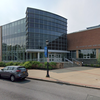Waste stream takes a new course
ALBANY COUNTY Society’s trend of consumption, use, and waste is becoming less linear as dumps around the world reach capacity.
The Rapp Road landfill, where most area garbage is taken, recently got approval for its fifth expansion, which is expected to last until 2016. How waste is handled after that point is a heated debate.
A draft plan for the Albany-owned dump’s future calls for both composting and incineration in what is commonly called a waste-to-energy facility.
Municipal-scale composting is currently fueled by institutions, like universities or state office campuses, restaurants, and grocery stores but will likely trend towards including residential food and yard wastes, said Ken Sauter, of the Peninsula Compost Group. He gave a presentation to about a half dozen people last week, which included a city councilman; members of the advocacy group Save the Pine Bush; and a member of the steering committee for the dump, which is located in the pine bush, a fragile ecosystem.
Sauter’s company recently constructed a municipal-scale composting facility on 28 acres in Delaware, which handles 160,000 tons of organic waste a year. Having just begun operating, the facility is built in an industrial zone in a port area, which is ideal for giving haulers ready access, he said. With windrows, like caterpillars crawling along the riverside, the process involves moving the waste first into rows covered with fabric for four weeks, while the temperature and moisture inside is monitored, then moving it to new rows, also covered, for two weeks, and finally moving it to uncovered rows for two weeks. The rough waste brought to the facility at the beginning, for a tipping fee of around $40, is a homogenous pile of black dirt at the end, which can be sold to a wholesaler or marketed by the facility.
It cost about $20 million to build the Wilmington Organic Recycling Center last year, Sauter said.
Large-scale composting facilities are sometimes used in conjunction with garbage incinerators, known as waste-to-energy converters, said Sauter.
Incinerators are recommended in the Rapp Road draft plan, although they are controversial.
“It looks like that’s the way they’re leaning,” said Albany Common Council member Dominick Calsolaro of the Solid Waste Management Partnership Planning Unit’s steering committee. The SWMP is made up of the municipalities that use the Rapp Road landfill, including New Scotland, Berne, Knox, Westerlo, Rennsselaerville, Altamont, and Voorheesville.
It needs further study, Calsolaro said, adding that one of his concerns is that incinerators often need a certain amount of fuel, or garbage, to run efficiently, thereby creating a disincentive for recycling and composting.
Since the early 1990s, Wheelabrator Technologies, a subsidiary of Texas-based Waste Management, Inc., has been running a waste-to-energy facility in Washington County with two incinerators that have a capacity to handle a total of up to 500 tons of waste per day, according to the company. They reduced the volume of garbage by 95 percent, according to Wheelabrator.
About 19 percent of the waste that now goes into the Rapp Road landfill is food, 11 percent paper, and 1 percent yard waste, according to the draft plan for the future of the dump. Of that 31 percent, about half of the paper wouldn’t be suitable for composting, so a total of about 25 percent of what goes into the dump would be able to instead be composted.
Calsolaro sees no difficulty by 2018, which is the planned start for the new waste management system, getting residents to separate their food and yard wastes from other garbage so it can be composted.


